Wild Danionins in Malaysia
by K.F.Tung
The author on searching for information on this particular group of fish
noticed that most work features India, Sri Lanka, Myanmar and Thailand as the
place of origin for this group of fish and it is the objective of this article
to add to this list of origin, my country Malaysia as one of the few countries
that also has wild Danios swimming in its rivers and jungle streams.
In this article, wild Danios are caught in jungle streams that are situated
near the author's home town of Taiping, in the Malaysian state of Perak. The
actual location is located on the foothills of Bukit Larut, where numerous
streams run off it.
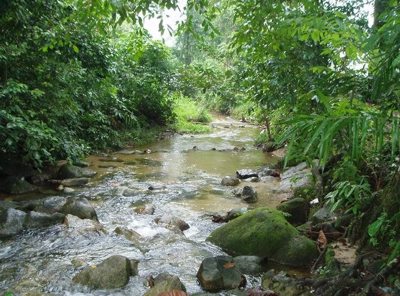
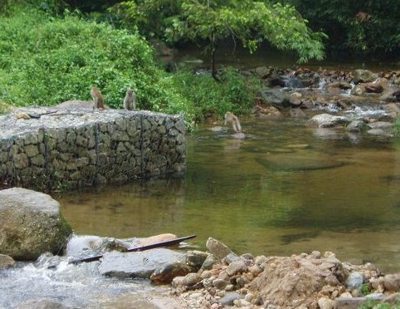
On the second picture, some of the "local residents", monkeys to be precise,
felt rather disturbed by my activity.
Getting To The Location.
Bukit Larut was formerly known as Maxwell Hill. The oldest hill resort in the
country, Bukit Larut is located near Taiping, and is a mere 10-minute drive
from there.
By Air
Nearest airport at Ipoh.
By Road
On the North-South Highway, take the Taiping exit out of the highway. Follow
the signs to Taiping after the toll and from Taiping town head towards the lake
gardens. There are signs showing the way to Bukit Larut(Maxwell Hill)
By Bus
From Kuala Lumpur Take the Transnasional Coach from the Hentian Duta Bus
Terminal.
By Taxi
From Taiping Catch a cab from town to the foot of Maxwell Hill for about RM5.
If you rather walk, it is about 6km from town. It's a lovely walk through the
gardens.
The Catch.
A casting net was used to collect specimens, this seem to be the most effective
way of catching fish in jungle streams.
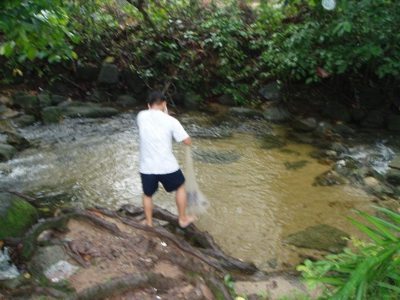
Although, the main intention was to capture Danios, other fish specimens were
also caught.
Species of Danios caught in this trip are Devario malabaricus, commonly
referred to as the Giant Danio. It reportedly can grow to a size of 5" (12.5
cm) on those found in the Malabar Coast of India and parts of Sri Lanka,
although the author has never seen species of such sizes in Malaysia.
The average sizes encountered in Malaysia, averages about 1.5" (3.7cm), with
the biggest specimen caught measuring 2.5" (6.2 cm) about 15 years ago in 1990.
It is possible this is a variant of the Giant Danio species that does not grow
as big as their cousins found else where.
The body is a silvery blue, with alternate horizontal stripes of blue and
yellow.
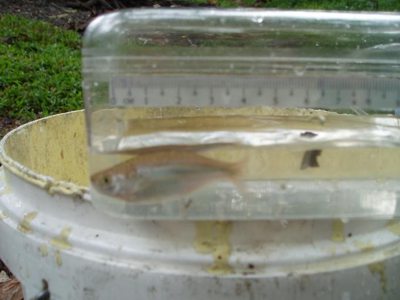
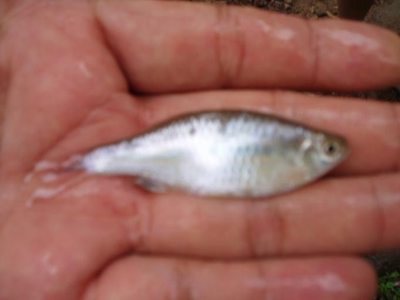
Some of the other fish caught are of the Rasbora family.
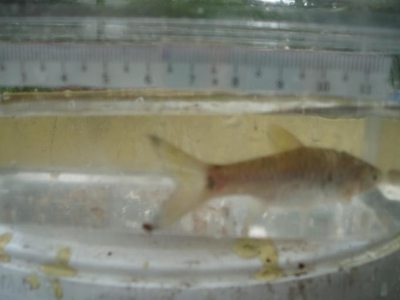
The above picture is a specimen of Rasbora trilineata Scissortail caught along
with the Giant Diano at the same time. This species I am glad to note is
documented correctly in most fish reference material to have come from Malaya,
the old name of Malaysia.
It has been documented to be able to grow to a size of 8”( 20 cm) I have
personally seen specimen of almost that size swimming in the wild. The body has
a silvery, almost transparent appearance with a thin black line running from
the centre to the tail.
Another Rasbora species caught is the Rasbora elegans Elegant Rasbora as shown
below.
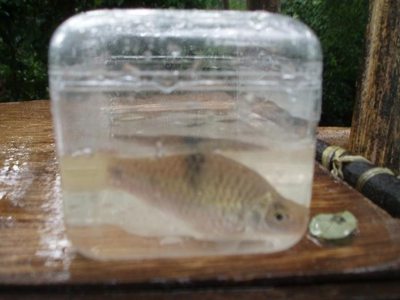
The Elegant Rasbora is again correctly identified as originating from Malaysia
in documented articles about this type of fish. The actual specimen caught
seems to be a full grown matured fish at 4.5” (11.2cm). It has a rusty hue on
its body with two large black spots, one at the centre of the body and the
other at the tail part. Reference:
-
www.journeymalaysia.com
-
The complete Aquarist's Guide to Freshwater Tropical Fishes – Peter Lowe.